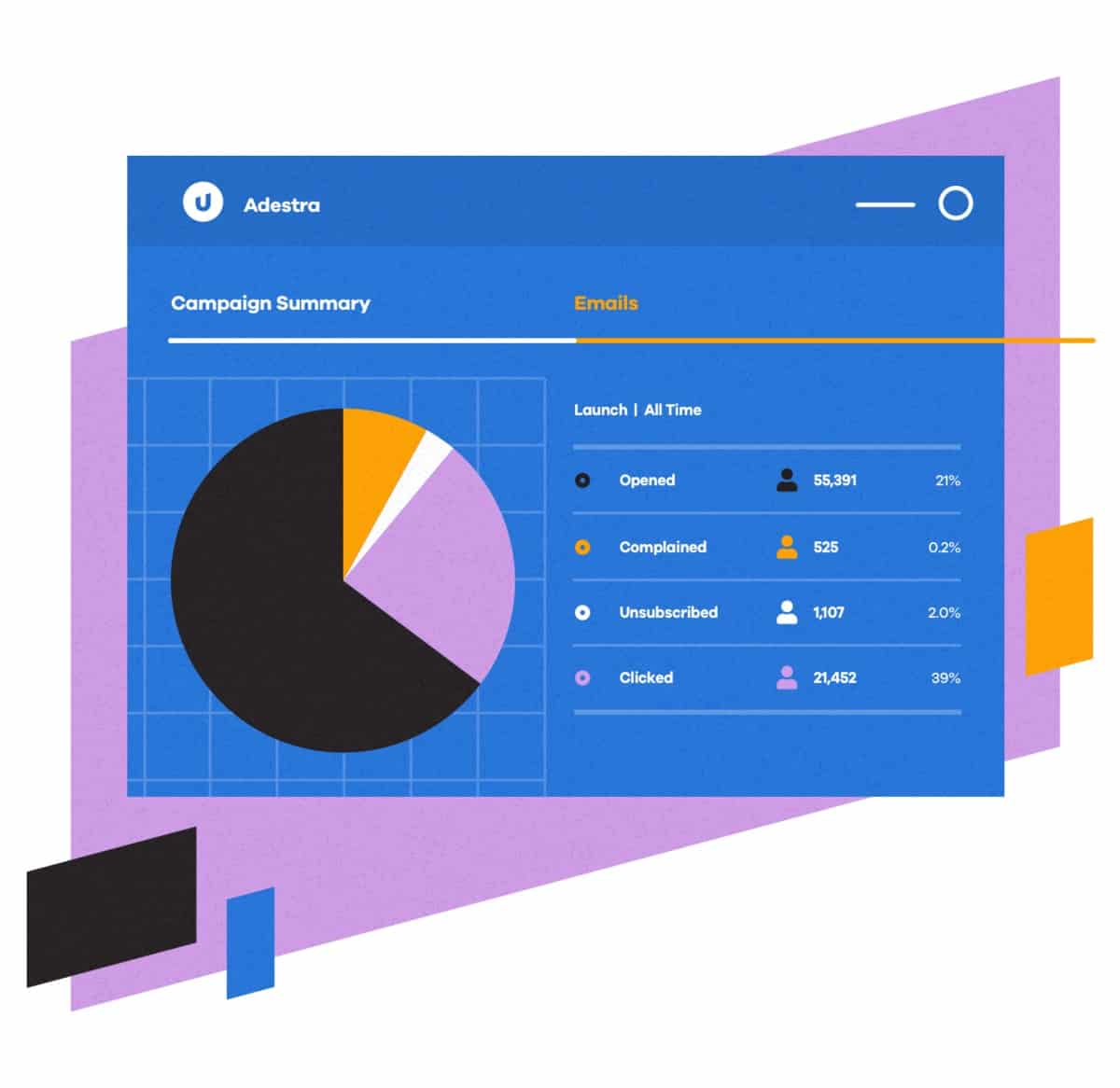What is Customer Journey Automation?
Customer journey automation is a system that automatically tracks all interactions and communications between a customer and the business and uses that data and mapping to enhance the structure to increase revenue. It starts tracking from the first contact all the way through the purchase of the product, as well as the journey post purchase, and stores all that information. Using customer journey mapping, businesses can understand their customers better and add automation processes that will improve the overall customer experience.
The journey of a customer starts when they first encounter a business or a brand through advertisements, email, social media platforms, or any other channel. The relationship continues to develop as the customer is exposed to more advertising, visits the website, and then goes on to purchase a product. Post-purchase, they may have to reach out to customer service to seek resolution of a problem, or maybe they are remarketed to and return for additional purchases.
This journey usually predicts whether the customer will continue the relationship with the business or walk away after one purchase. A detailed customer journey can also provide insight into customer satisfaction and customer churn.
Tracking the customer journey provides a detailed map that can help a business understand the experience that every customer has with them. From tracking individual journeys to aggregating data to see overall patterns, the customer journey is an important aspect of a business’s marketing strategy. Understanding the different actions a customer makes can help businesses come up with ideas to improve the overall customer experience and keep their customers coming back for more.
Once the customer journey is mapped, using automation and tools can help businesses better understand their customers and provide them with a solid customer experience. These tools can analyze the customer’s journey across web, mobile, and physical channels.
A good customer journey map can help businesses understand the customer’s personality, buying behavior, level of engagement with the business, motivating factors, and expectations. Using customer journey automation tools can help businesses map the customer’s journey, improve the customer experience, and address inefficiencies inside the business.
Customer journey automation can help in identifying and addressing the following challenges:
- Content gaps: One major benefit of customer journey automation is analyzing gaps in existing content. This can help businesses create new valuable user-friendly resources like articles, eBooks, blog posts, and technical guides
- Key challenges: Customer journey automation helps businesses identify key challenges that both the customer and the business face during the customer journey. This way steps can be taken to avoid issues like follow-up delays, cold calling, and confusing customers with products that are not of interest
- Tedious manual processes: An automation tool helps businesses automate repetitive tasks and speed up the processes, increasing business efficiency and providing customers with a better experience.
Why is Customer Journey Automation Important?
Customer journey automation helps to:
- Attract new customers
- Engage and nurture existing customers
- Retain them and reduce customer churn
- Automating repetitive tasks
- Streamlining customer journeys
It is a holistic tool that helps organizations understand the needs of the customers better using artificial intelligence (AI), improving the overall customer experience.
Connecting and Engaging with Customers
Customer journey automation helps businesses track customer profiles, behavior, and preferences using email and social media platforms. Automation provides an omnichannel approach that ensures a seamless customer journey from beginning to end. It also helps in personalizing and customizing marketing strategies for each individual instead of having a similar approach for all customers.
Improve Marketing Efficiency
Customer journey automation tools help in reassessing and redefining marketing strategies to match the objectives of the business and get better outcomes. It identifies any behavioral changes in customers and accordingly helps customize and fine-tune marketing campaigns targeting the right audience. As a result, marketing campaigns can operate in real-time and are targeted toward the customer. Additionally, automation helps by delivering detailed reports about each campaign that can help businesses understand what’s working and what’s not. Customer journey automation helps improve not only the customer experience but the overall marketing performance of a business.

Use Cases for Customer Journey Automation
There are some multiple relevant use cases for customer journey automation.
Resolving Issues
The average millennial uses at least three or more devices a day and spends many hours online. They tend to prefer automated systems for customer support that are accessed online, with an immediate response time. This is where customer journey automation steps in.
Customer service automation providers often include options like AI automation tools in the form of chatbots or live chat assistance that can improve the customer support experience. These automation options can help resolve many common issues like shipping estimates or other frequently asked questions within minutes at any time of the day. This positive customer service experience will encourage repeat purchases, increase retention, and boost the chances of customers recommending the brand to other prospects.
Providing Personalized Services and Support
Customer journey automation can help businesses target the specific interests of their customers and accordingly customize the journey of every individual customer. Bulk email services, customer relationship management (CRM) systems, automated email platforms, and other automation tools can help businesses by sending targeted offers to customers based on their online interaction with the business.
Alternatively, automation tools can help by tailoring recommendations for customers, recalling customers who abandoned their shopping carts, or getting in touch with the customers post-purchase.
The Seven Steps of Mapping a Customer Journey
Customer journey mapping can help businesses design a strategic approach to better understand their customers at different touchpoints and provide a delightful customer journey.
1. Define Objectives
The first step in creating a customer journey map starting with the goal of the project. This may be to identify challenges, optimize conversation paths, or improve the user experience. The organization should write down the objectives that they want to achieve by mapping the customer journey.
2. Identify Buyer Personas
The next step is to create an ideal customer profile. When creating a profile, businesses need to understand the customer behavior, preferences, and challenges they face and an in-depth profile can help make the customer journey better. This doesn’t mean that other customers won’t be appreciated or marketed to, but simply that the organization is targeting their perfect idea of a customer.
3. Listing Touchpoints
Businesses need to prepare a list of all touchpoints where the business interacts with the brand. This includes online touchpoints like websites and social media, over-the-phone contact like customer service, and physical locations like brick-and-mortar stores. This step will help businesses create strategies for interaction with customers at each touchpoint.
4. Identify Stages
The customer experience should be broken down into different stages. This includes awareness or initial knowledge about the brand, consideration stage where the customer is showing interest in the product, purchase, and post-purchase. This will help in taking measures to enhance customer experience at each stage. This should line up with existing sales funnels.
5. Gather Data
The fifth step is all about data gathering. Data includes customer feedback, business analytics, and competitive insights. These should be used to optimize the overall customer journey. For instance, if customers continually complain that there seems to be an extra step in the shopping cart creation, it needs to be noted.
6. Visualize the Journey
A visual representation should be created using all the information gathered. This is the user journey map. This visualization will make it easier for businesses to understand the experiences of customers at each stage. This will work as a cheat sheet that predicts where things can go wrong, and accordingly, preventative or corrective measures can be taken. For instance, if a customer buys a product and does not get an confirmation email, they may feel worried the sale was incomplete.
7. Iterate and Refine
The seventh and last stage is that of iteration and refining. A customer journey map is never static. It’s important that the map is continually refined as more insight is gathered and the customer base grows.

Benefits of Customer Journey Automation
Using customer journey automation platforms can help businesses in many ways, all leading to increased customer satisfaction, improved customer retention rates, and an increased likelihood of customers recommending the brand to new prospects. All of this eventually leads to business growth and increased revenue. There are some key benefits that businesses can see by implementing customer journey automation.
Personalize Customer Service
Automating the customer journey ensures all customer interactions with customer service support are recorded. As a result, when the customer reaches out to a support team member through any communication channel, they simply access the customer file, get details about the interaction, and accordingly interact in a more personalized way with the customer.
Omnichannel Approach
Through customer journey automation, businesses can offer omnichannel connection options to their customers. This allows customers to easily connect with the business from the communication channel of their choice. Despite this ad-hoc method of communication, all customer contact information is collected, collated, and turned into a clear chain of contact.
Predictive Analysis
Using AI, some automation tools can predict the customer’s moves and preferences. This allows businesses to design personalized recommendations for customers, improving the customer journey.
Reduced Errors and Increased Efficiency
By automating repetitive and mundane tasks, automation tools reduce the chance of human error. Machines also get the work done in much less time than it takes to do it manually. This also allows employees to focus on more important, creative, or complex tasks, increasing the overall efficiency not just of the employees but also of the business overall.
Effective Data Management
Data automation software brings customer and business information together from a range of different sources. Combining it all creates a reliable single course of truth which provides a consistent data management system.
Choosing the Right Customer Journey Automation Platform
There are some things to consider when choosing your customer journey automation platform. Organizations need to assess the capabilities of the platform, gain clarity on intended usage, prices, and then accordingly select from the best available options.
Features
The characteristics and features of automation platforms vary from product to product. Businesses should prepare a list of must-have features and accordingly conduct preliminary research about different software to check if they meet the needs.
User Interface
The user interface of a customer journey automation platform should be easy to understand, simple to use, and should deliver precisely tailored information.
Cost
Businesses must compare the costs of various tools available, especially if there are budget limitations. Usually, service providers charge for the tools based on a quarterly, half-yearly, or annual subscription or based on the number of users. Businesses should decide on which type of subscription they want to take, depending on the size of the business, the number of customers, and the features required. Consider the scalability prospects of the software, to accommodate the a growing business.
Customer Service
The level of customer service provided by the platform service provider must be considered as well. This includes the availability of customer service around the clock, the response time, the complaint resolution time, and the platform maintenance services. Consider the different channels available for customer support services and what works best for the organization.
Analytics and Reporting
The customer journey automation platform must have the feature to analyze data and give insights into the customer experience and marketing initiatives. This can help businesses make data-driven decisions and help increase the overall productivity of the team, improve marketing efforts, and achieve increased customer satisfaction.
Customer Journey Automation: Getting Started
Customer journey automation can help an organization improve in multiple ways. Whether it’s personalization, improving customer service, or using ML to make predictions, a strong automation platform can deliver a range of functions with the overall goal of improving business practices, allowing for more targeted marketing, and creating delightful customer experiences every step of the way.